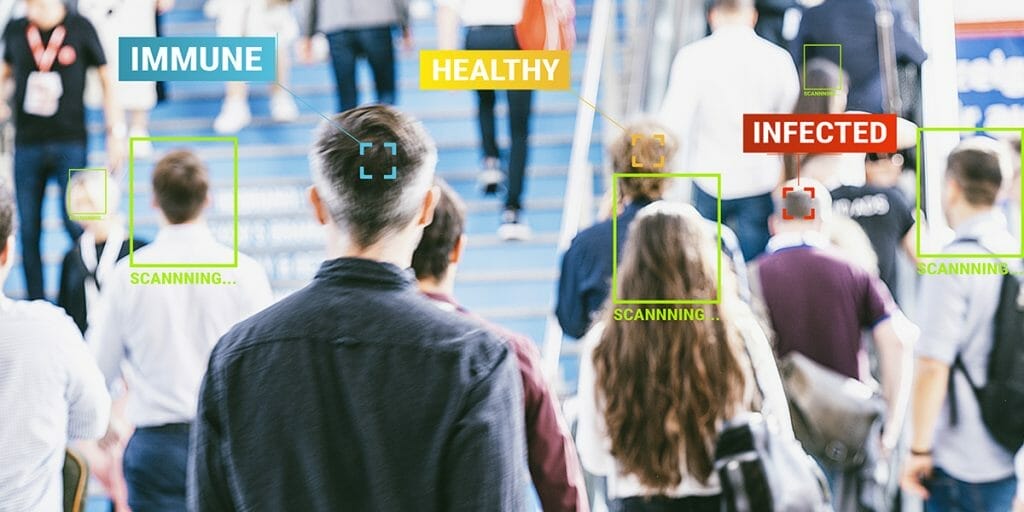 It is a matter of ongoing review that different countries have experienced different levels of infection with SARS-Cov-2. Some had had very low rates to date with a similarly adjusted associated loss of life and others such as the USA, UK and India have had high levels of infection and associated loss of life.
It is a matter of ongoing review that different countries have experienced different levels of infection with SARS-Cov-2. Some had had very low rates to date with a similarly adjusted associated loss of life and others such as the USA, UK and India have had high levels of infection and associated loss of life.
The results of the new study, published (July 21 2020) in JAMA Internal Medicine suggest that, despite the rising numbers, the infection rate suggested to be necessary for herd immunity has yet to be reached. However, the data indicates that many of these people likely had no symptoms or mild illness and may have had no idea that they were infected. The authors indicate that as many as 40% have been without symptoms while the symptoms brought on by the disease can be highly variable.
Existing immune competence, viral load and other elements previously discussed are suggested as reasons for such a high asymptomatic level and the related number needed to be exposed to determine the gradual collapse in new cases is accordingly adjustable.
Contemporary thinking is that a population exposure in excess of 60% is required to generate a reasonable effect and some diseases such as Smallpox requires 95% because of its level of infectivity.
Yet a paper reported in Outlook India from an Oxford research group indicates that the Herd Immunity Threshold (HIT) may be lower due to a wide-ranging exposure to prior coronaviruses such as the common cold. The authors state “It is widely believed that the HIT required to prevent a resurgence of SARS-CoV-2 (COVID-19) is in excess of 50% for any epidemiological setting. Here, we demonstrate that HIT may be greatly reduced if a fraction of the population is unable to transmit the virus due to innate resistance or cross-protection from exposure to seasonal coronaviruses.” This is a pre-review paper and may be subject to further edits, but this group is not the only one suggesting that historical exposure may be protective, even if no antibodies are circulating with specificity for SARS-Cov-2.
However, these notions rely on the effective functioning of your immune system and its ability to sustain B and T-cell responses, which even if working optimally their long-term deliverables remain unknown, due to the relatively recent exposure to this virus. The human immune system — a vast network of cells and tissues — remains the most potent defence against infection.
Immunity could mean a strong antibody response, which prevents the virus from establishing itself in cells. But it could also mean a good killer T-cell response, which could potentially stop an infection very quickly: before you feel sick and before you start spreading the virus to others.
 Throughout the development and global spread of the virus we have sustained a position that the immune system works best when adequately nourished, regardless of age, gender or colour and that certain nutrients may be needed in larger doses than normal to compensate for increased demand and deficiencies. A recently published preprint cohort study with a small number of 47 older patients with a positive diagnosis were followed to see if the oral supplementation of Vit D, B12 and magnesium produced a better clinical outcome than those who did not receive the supporting nutrients.
Throughout the development and global spread of the virus we have sustained a position that the immune system works best when adequately nourished, regardless of age, gender or colour and that certain nutrients may be needed in larger doses than normal to compensate for increased demand and deficiencies. A recently published preprint cohort study with a small number of 47 older patients with a positive diagnosis were followed to see if the oral supplementation of Vit D, B12 and magnesium produced a better clinical outcome than those who did not receive the supporting nutrients.
They concluded that the nutrients combination in older COVID-19 patients was associated with a significant reduction in proportion of patients with clinical deterioration requiring oxygen support and/or intensive care support. Safe, cheap and effective, worth keeping in mind when communicating options to clients, patients and colleagues.
Whatever the outcome with the vaccine development, in order for vaccines or herd immunity via exposure to work, by which I mean provide a level of preventative protection of adequate consistency, that people are prepared to take the benefit over the relative risk. Your immune system must still be adequately nourished to work optimally.
Resilience means the best ability to generate an adequate, but not excessive response to an exposure designed to either infect or promote defensive outcomes – lifestyle, public health, nutrition and stress management remain key determinants!
